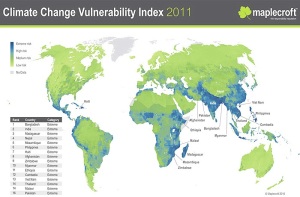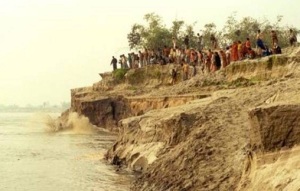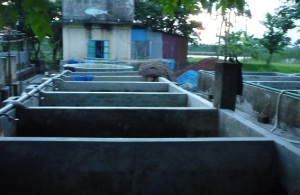Fisheries in Bangladesh are the principal source of animal protein and second dominating economic activities in the agriculture of Bangladesh. Required production and future demand is to be supplemented by improving culture practices and sustainable harvesting of natural stocks. The demand for all sources of fish food increases every year due to increase of population in the country. Scientists, fish farmers and fishers face various constraints and vulnerabilities as they are main triggers for technology generation, production enhancement and sustainable fisheries development.
Fund scarcity, irregular funding, lack of uniform service rules, limited opportunities for permission, etc., are on the constraining factors for dissatisfaction of scientists in harmonizing research. Low production, knowledge gaps, lack of dependable marketing information, disease hazards, low price, required inputs supports and uneducable technologies are major factors responsible for optimizing production. Therefore, the sector is to face serious challenges to keep pace with the production target with the demand in future. The challenges to the sector may be as follows:
- Fisheries have to contribute, at least, to the present rate of supply in 2030, domestic income, export earning and employment.
- Fisheries have to be instrumental to food security and poverty reduction of poor fishers in increasing pressure of population growth.
- Production has to be raise and manage in hazardous condition with high cost inputs in complex land use policy.
- The sector has to explore potentials of all resources to increase per unit production from culture fisheries, sustainable production and biodiversity conservation of capture fisheries, develop innovative technology for agriculture, improve market chain, value addition and diversified product development, etc.
 Vulnerability to climate change:
Vulnerability to climate change:
Bangladesh in general is highly vulnerable to predicted climate changes that are already occurring and are expected to continue over the next century. Bangladesh is recognized worldwide as one of the most vulnerable to the impact of global warming and climate change. There is no study on the expected affect of climate change on fisheries in Bangladesh. However, it is apprehended that the vulnerability of fisheries dependent communities, particularly open and floodplain fishers will be high if the climate becomes more extreme. Climate change has both direct and indirect impacts in fish stock which are exploited commercially. It is evident that natural fish stock will be more resilient to climate impacts with significant food security consequences for certain populations. Climate changes directly effects on physiology and behavior of fish and alter growth, reproductive capacity, mortality and distribution.
 Environmental Vulnerability:
Environmental Vulnerability:
Aquatic environment and its ecosystem quality in inland and coastal areas are closely connected with atmospheric and terrestrial systems, hence vulnerable to environmental variability increases. Being situated in the deltaic region of three major river systems- Ganges-Padma, Brahmaputra-Jamuna and Megna, Bangladesh is vulnerable to floods, droughts, hurricanes, cyclones and storm surges. Serious floods from the north and intense cyclone bring disaster regularly. The sector is likely to face serious vulnerability in terms of global warming, shifting rain fall pattern.
 Water Pollution:
Water Pollution:
Pollution of water habitat has become as one of the most crucial environmental problems of the century. Water pollution has many sources. The most pollutants of them are the city sewage, domestic and municipal wastage, industrial waste discharged, agriculture including commercial livestock and poultry farming waste, oil spill, etc. Domestic sewage contains a wide variety of dissolved and suspended impurities and caused significant technical problem to the watery animals and fishes. The effects of water pollution are devastating to fishes and other aquatic life. More seriously, the polluted water reduces the reproductive ability and regular growth pattern of fishes.
 Loss of Fish Biodiversity:
Loss of Fish Biodiversity:
The species composition in open-water has been out of balance because of disturbance to natural reproduction of the fish by overfishing and other natural and man made causes. During migratory journey to and from floodplains and return to the safe habitat fish face many obstacle and hazards, which seriously disturb reproduction and survival in the system. Physical loss, shrinkage and modification of habitats are major factors in depleting fish varieties. Thousands of physical structure constructed to control floods, cyclone and other natural calamities. Such structures resulted irreparable damages to fisheries diversities.
 Siltation and Erosion:
Siltation and Erosion:
In addition to human-induced degradation of aquatic habitats, siltation is also a problem for open-water fisheries. Siltation is a natural feature along the length of rivers and normally results in a gradation of particle size from lower order streams with the coarsest material to higher order streams with the finest. This natural sedimentation contributes to the development of many of the morphological features of rivers and floodplains. Siltation generally reduces the area and decreases water volume of waterways. Silt deposited in riverbeds results in loss of breeding grounds and disturbs migratory routes of valued carp and catfish. Further, siltation causes drainage problems and diminishes water refuge grounds for fish. Silting also results from low stream flow and erosion of floodplain sediments after rain and wind. Wind erosion occurs during the dry season.
 Cross boundary issues:
Cross boundary issues:
Unauthorized fishing beyond the limit of own territory, quick dispersal of highly migratory species, oil spills, discharge of fossil fuel into the beyond limit of another sea; water pollution, etc., are the major concern of cross boundary issues. The issue causes vulnerability to deep sea fish stock and resources. Unauthorized fishing in the economic zone of Bay of Bengal and its dense areas are most common act of neighboring trawl fisheries. Not only they fish, they use explosive and charge bomb to frightened the population for forcing migration out of the own zone for safe fishing. Hilsa shad including other migratory species moved to the areas and become subject of unauthorized fishing. Oil spill and discharge of fossil fuel, raw sewage and garbage are causes most threatened to wild life and attribute to waterborne diseases. Such pollution does not respect the national boundaries.
 Technology for new avenues:
Technology for new avenues:
The numbers of evolved packaged technologies are large and proved effective and potentials. Most of them are related to inland culture and capture fisheries. Technology necessary for marine fish breeding, culture, management and conservation are limited. Many of the evolved technologies are required modification and standardization suited to more challenging agro ecological zones for balancing the ecological niches. Research focusing fish-culture and management in closed floodplains under unfavorable environments, development of stress and extreme heat and cold tolerant varieties is essential. Scientists must determine variables responsible for yield gap at fish culturist level.
Source: BARC
read other related stories:
Vision of Fisheries Research in Bangladesh
Sub-Sector Fisheries in Bangladesh Agriculture
Policy relevance Fisheries Development in Bangladesh
Zinc-Enriched Rice variety – BRRI Dhan 62
Crop Suitability and Zoning – Soil of Bangladesh
A small Statistics about Rice in Bangladesh
All about Rice in one Place – BRKB
BARC – Bangladesh Agriculture Research Council
Fisheries in BD – Technological Advancement
Technology in Fisheries – Bangladesh

